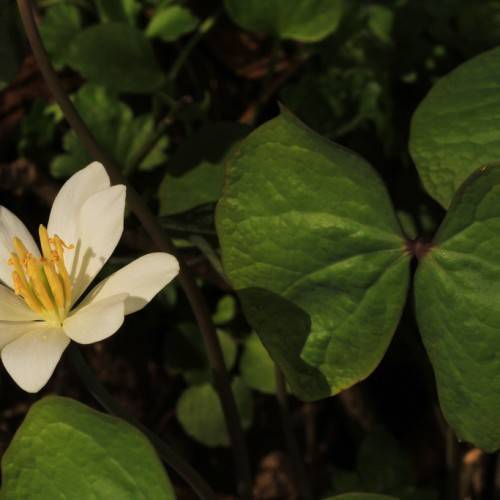
twinleaf
Jeffersonia diphylla
Cycle:
Herbaceous Perennial
Watering:
Average
Hardiness Zone:
5 - 7
Flowers:
Flowers In Spring
Sun:
Part shade
Leaf:
Yes
Growth Rate:
Low
Maintenance:
Low
Salt Tolerant:
Yes
Thorny:
Yes
Care Level:
Medium
watering
Twinleaf plants should be watered about once a week during the growing season. Keep the soil lightly moist; never soggy. During the winter months, let the soil dry out slightly between waterings. When giving a plant a good watering, soak the soil completely, then wait until the top couple of inches have dried before watering again.
sunlight
Twinleaf is a perennial plant species that grows well in moist, well-draining soils in full to partial shade. The plant requires at least 6 hours of bright, indirect sunlight each day to thrive. When initially planted, twinleaf should be placed in a location that receives some morning sunlight and indirect afternoon sunlight. As the plant matures, it can tolerate full sun for up to 3 hours. Twinleaf should not be left in direct, harsh sunlight for extended periods of time as this can damage the leaves and cause it to wilt.
pruning
Twinleaf (Jeffersonia diphylla) is an early spring bloomer and should be pruned when the plant is still dormant or before new growth emerges in early spring. Pruning of twinleaf should be minimal, consisting of light shaping and deadheading as needed.If desired, some light thinning of branches can be done to maintain an attractive shape and to encourage larger blooms. Major pruning should be avoided as it may delay blooming or affect the overall health of the plant.
